Abstract
Modern coding sequences are in the periodicto-chaotic transition. In the case of two related sequences for lens alpha A-crystallin and small heat shock protein, the original repeating units were heptameric in length. Accordingly, base trimers that were parts of heptameric units recurred far more frequently than those that were not included. In the crystallin coding sequence, CTG trimer recurred 21 times, and TCT and TCC trimers recurred 17 times each. By contrast, CTA and TCG, although related to the above, recurred only 4 and 3 times, respectively. It is a small wonder that 10 of the 16 leucine residues were encoded by CTG, whereas none was encoded by CTA, and that 17 of the 23 serine residues were encoded either by TCT or by TCC, whereas only 1 was encoded by TCG. In the small heat shock protein coding sequence, however, AGC became parts of the two prominent heptameric recurring units. Not surprisingly, 10 of the 22 serine residues were now encoded by AGC. In conclusion, the so-called codon preference is a mere reflection of the construction principle of coding sequences and has very little to do with selection per se.
Full text
PDF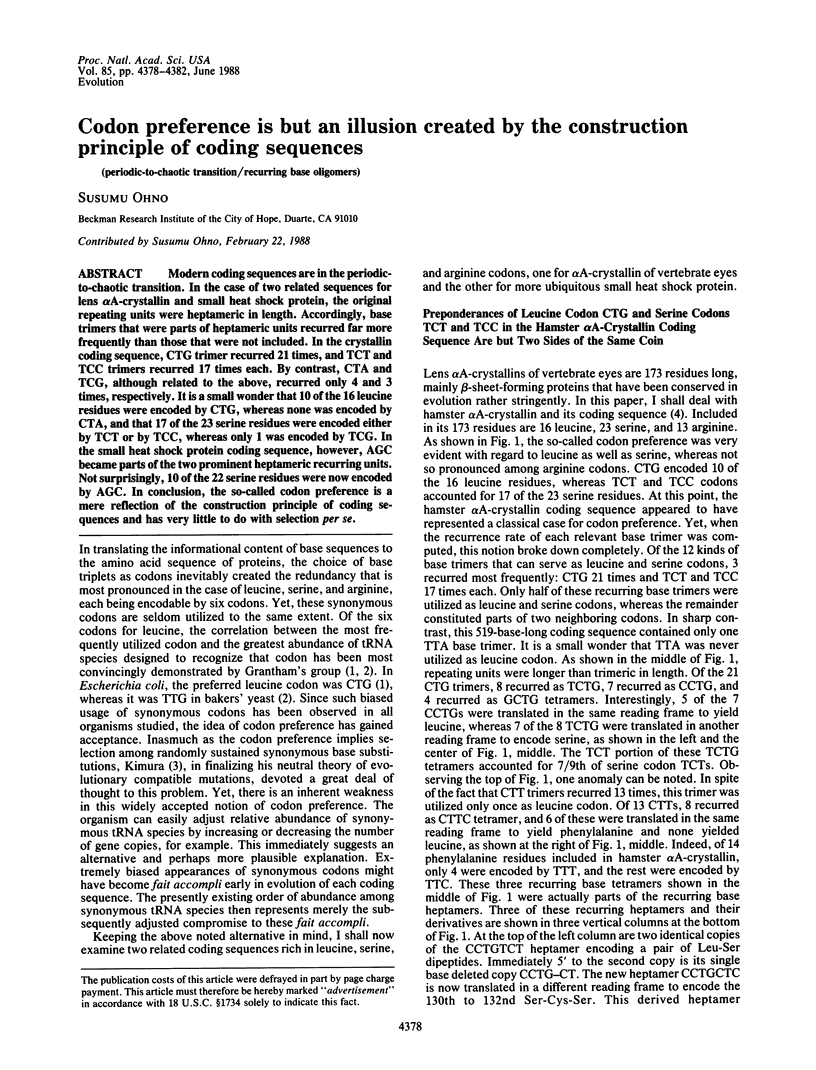
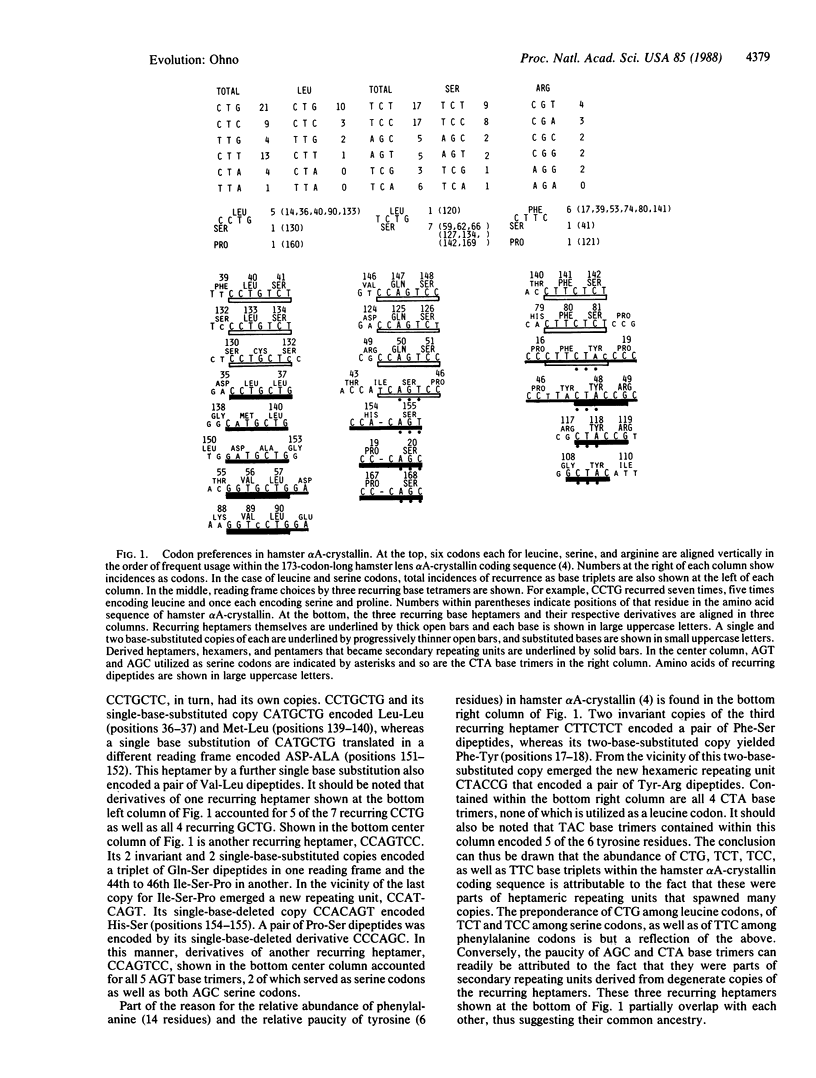
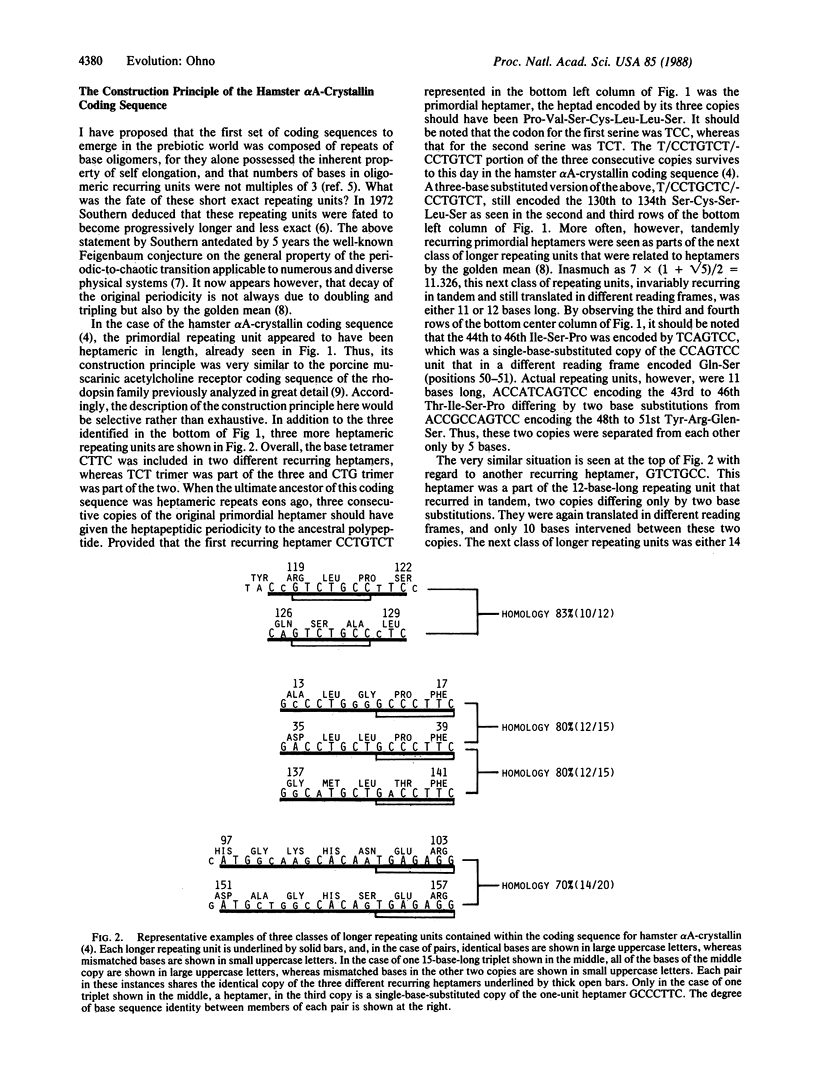
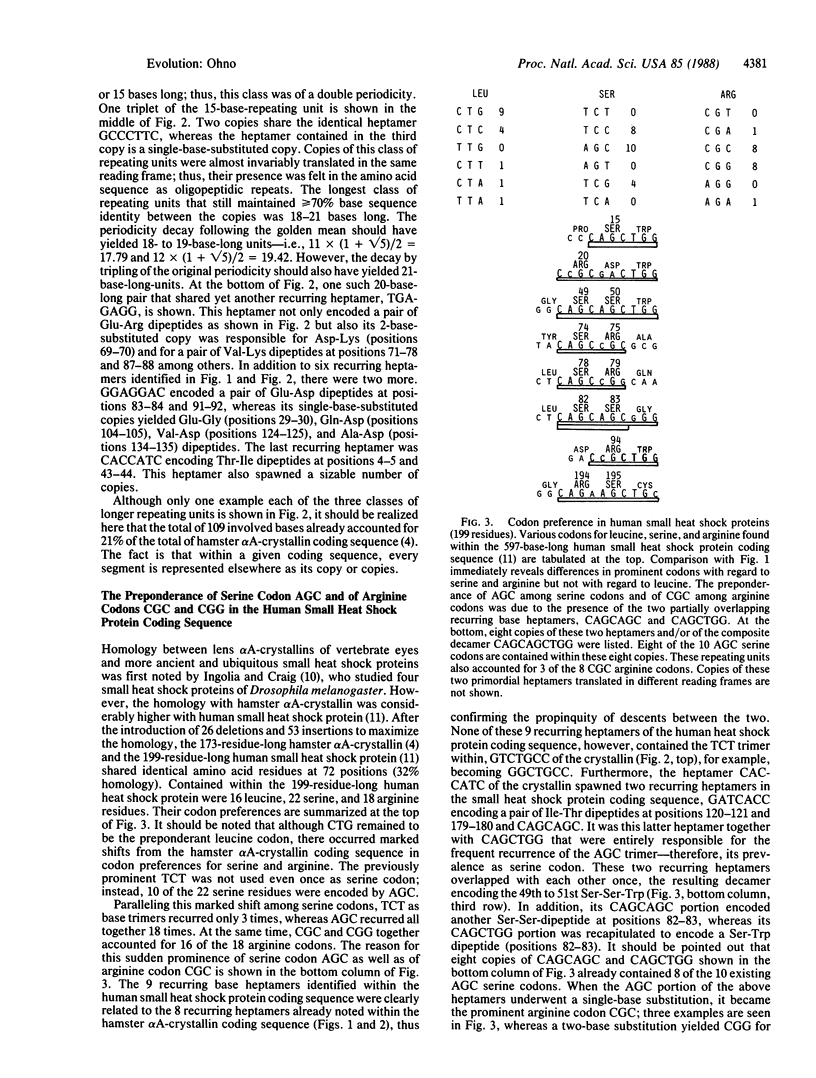
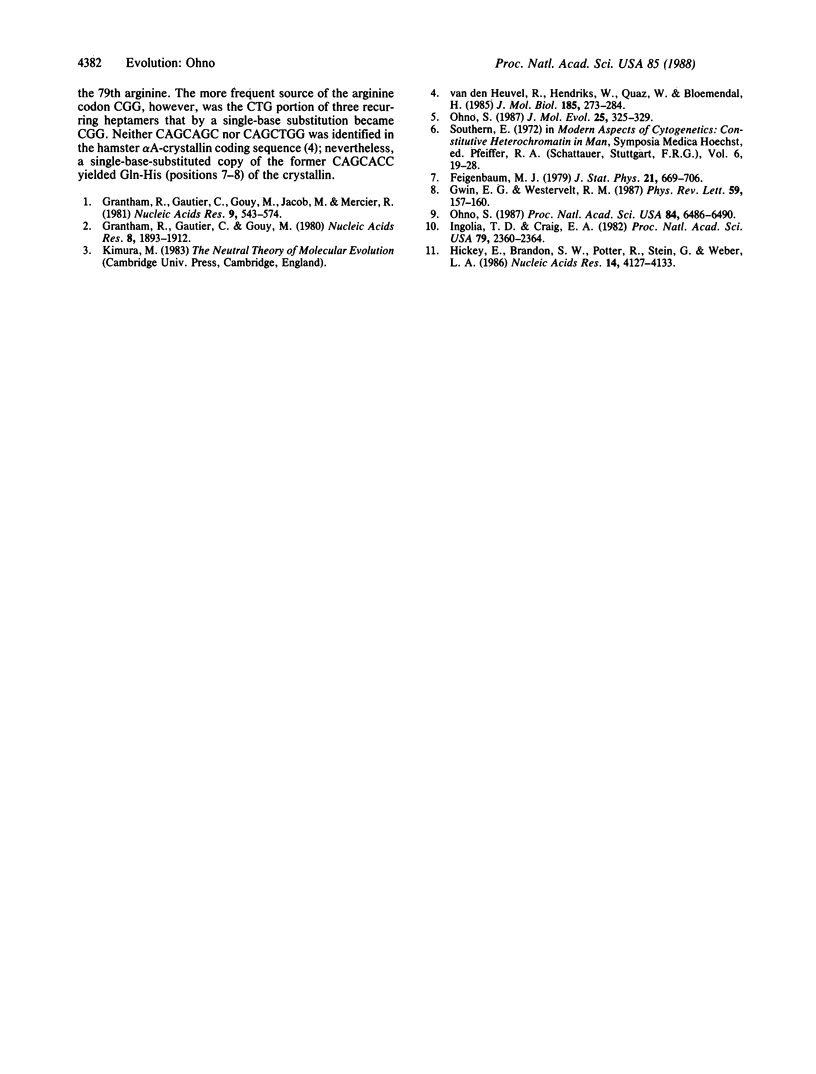
Selected References
These references are in PubMed. This may not be the complete list of references from this article.
- Grantham R., Gautier C., Gouy M. Codon frequencies in 119 individual genes confirm consistent choices of degenerate bases according to genome type. Nucleic Acids Res. 1980 May 10;8(9):1893–1912. doi: 10.1093/nar/8.9.1893. [DOI] [PMC free article] [PubMed] [Google Scholar]
- Gwinn EG, Westervelt RM. Scaling structure of attractors at the transition from quasiperiodicity to chaos in electronic transport in Ge. Phys Rev Lett. 1987 Jul 13;59(2):157–160. doi: 10.1103/PhysRevLett.59.157. [DOI] [PubMed] [Google Scholar]
- Hickey E., Brandon S. E., Potter R., Stein G., Stein J., Weber L. A. Sequence and organization of genes encoding the human 27 kDa heat shock protein. Nucleic Acids Res. 1986 May 27;14(10):4127–4145. doi: 10.1093/nar/14.10.4127. [DOI] [PMC free article] [PubMed] [Google Scholar]
- Ingolia T. D., Craig E. A. Four small Drosophila heat shock proteins are related to each other and to mammalian alpha-crystallin. Proc Natl Acad Sci U S A. 1982 Apr;79(7):2360–2364. doi: 10.1073/pnas.79.7.2360. [DOI] [PMC free article] [PubMed] [Google Scholar]
- Ohno S. Early genes that were oligomeric repeats generated a number of divergent domains on their own. Proc Natl Acad Sci U S A. 1987 Sep;84(18):6486–6490. doi: 10.1073/pnas.84.18.6486. [DOI] [PMC free article] [PubMed] [Google Scholar]
- Ohno S. Evolution from primordial oligomeric repeats to modern coding sequences. J Mol Evol. 1987;25(4):325–329. doi: 10.1007/BF02603117. [DOI] [PubMed] [Google Scholar]
- van den Heuvel R., Hendriks W., Quax W., Bloemendal H. Complete structure of the hamster alpha A crystallin gene. Reflection of an evolutionary history by means of exon shuffling. J Mol Biol. 1985 Sep 20;185(2):273–284. doi: 10.1016/0022-2836(85)90403-6. [DOI] [PubMed] [Google Scholar]


